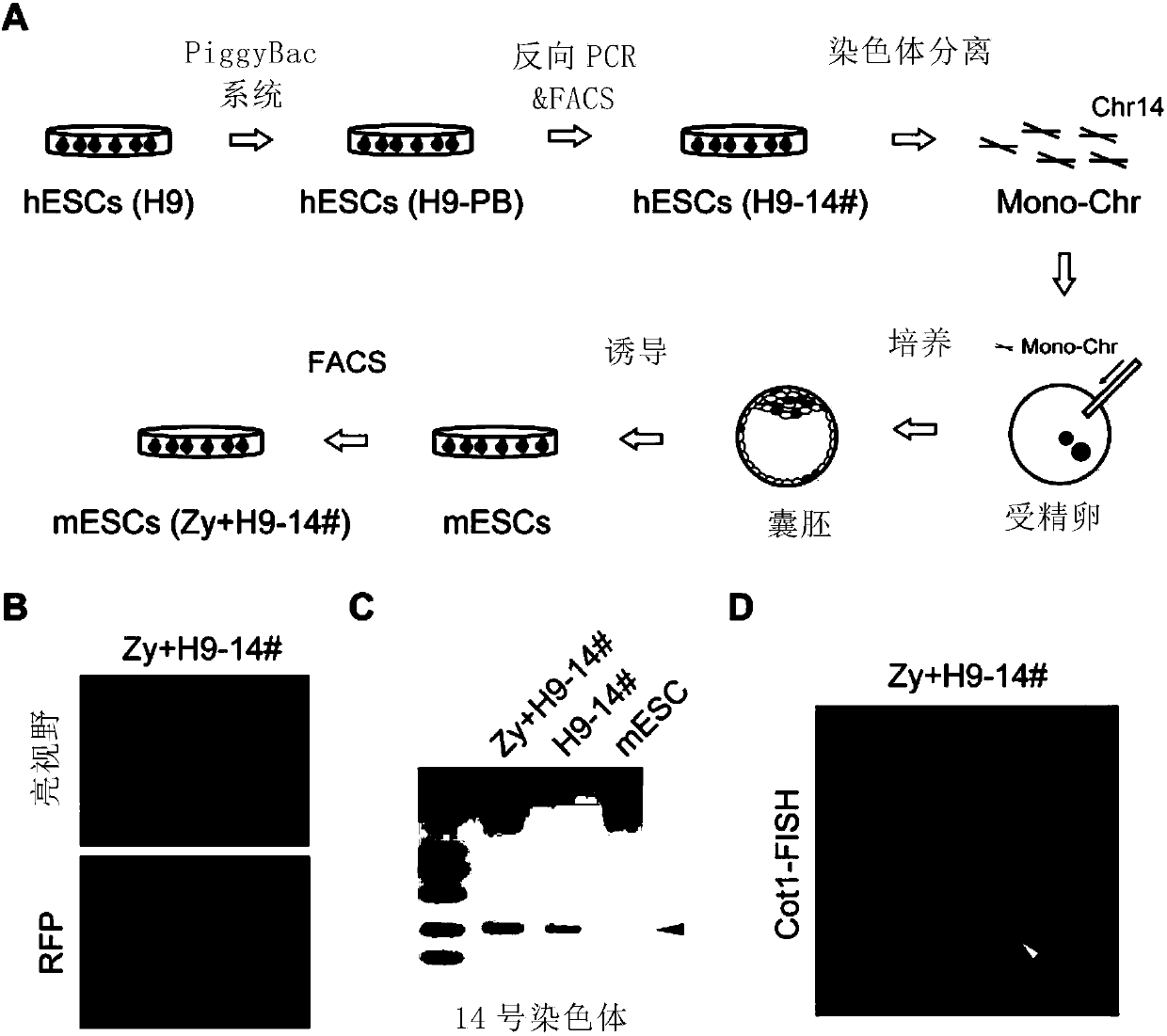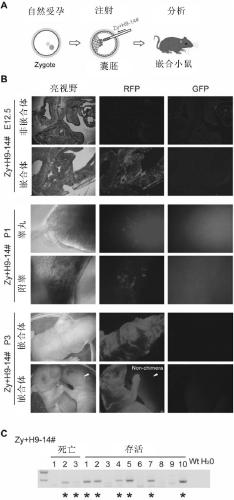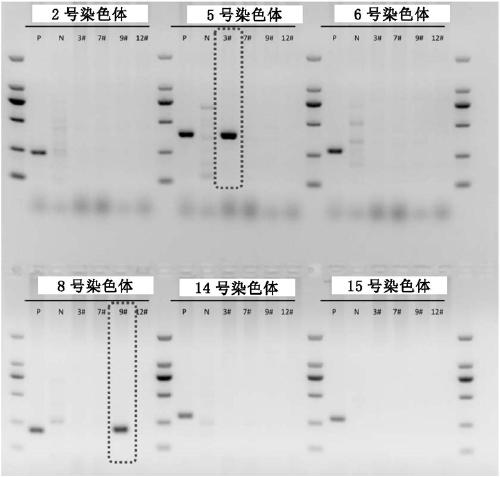Novel method for establishing embryonic stem cells containing exogenous chromosome
A technology of embryonic stem cells and chromosomes, applied in the field of genetics, can solve problems such as the uncontrollable number of chromosomes
- Summary
- Abstract
- Description
- Claims
- Application Information
AI Technical Summary
Problems solved by technology
Method used
Image
Examples
Embodiment 1
[0082] Construction of mouse embryonic stem cell line containing human chromosomes
[0083] Through piggyBac site-directed integration technology, CAG-mCherry was randomly inserted into each human chromosome in the human H9 cell line, and through flow sorting technology, a stable cell line with CAG-mCherry integration on each chromosome was obtained.
[0084] Subsequently, the cell line was blocked in M phase by Democolcine, and then each chromosome was separated separately, and each individual human chromosome was injected into the mouse fertilized egg by the method of microinjection. If the human chromosome carries CAG-mCherry, the blastocyst cells developed from the fertilized egg will express mCherry fluorescence, so the cells containing human chromosomes can be tracked in real time. Through this approach, mouse blastocysts containing fluorescence were established to establish embryonic stem cell lines, and then the established mouse embryonic stem cell lines were further ide...
Embodiment 2
[0092] Directly transfer modified chromosomes to mediate chromosome engineering
[0093] In order to further study whether the direct transfer of the modified chromosome (DTMC) strategy in Example 1 can be used to generate mouse embryonic stem cells carrying human chromosomes, the H9-14# cell line was used for experiments. H9-14# cells are prepared by inserting the mCherry reporter gene into the PiggyBac (PB) system on chromosome 14 of the human embryonic stem cell line (H9).
[0094] A single chromosome isolated from the H9-14# cell line was selected and injected into the mouse fertilized egg by Piezo microinjection method ( figure 1 A). The injected fertilized eggs were cultured to blastocysts and embryonic stem cell lines were established. The constructed cell lines were identified based on mCherry fluorescence and specific primers on human chromosome 14.
[0095] The result is figure 1 As shown in B and 1C, a cell line containing human chromosome 14 (named Zy+H9-14) was obtained...
Embodiment 3
[0098] Obtain humanized animal models through DTMC-mediated strategies
[0099] In order to investigate whether this direct transfer of modified chromosomes (DTMC) strategy can be used to generate humanized mice, the Zy+H9-14 cells constructed in Example 2 were injected into mouse blastocysts ( figure 2 A). After transplanting the injected embryos into pseudo-pregnant female mice, the gene-edited mice obtained by the DTMC-mediated method had a normal birth rate, and successfully obtained humanized mice (61.5%, 8 out of 13). Positive mouse) ( figure 2 B and figure 2 C). The mCherry expression with high chimerism rate can be found in the sections of 12.5-day embryos and P3 newborn mice ( figure 2 B). In particular, when the expression of mCherry can be detected in the testis and epididymis of P1 newborn mice ( figure 2 B), which shows that it is very likely to have the ability to obtain humanized mice through germline transmission.
[0100] The pregnant female mice gave birth ...
PUM
 Login to View More
Login to View More Abstract
Description
Claims
Application Information
 Login to View More
Login to View More - R&D
- Intellectual Property
- Life Sciences
- Materials
- Tech Scout
- Unparalleled Data Quality
- Higher Quality Content
- 60% Fewer Hallucinations
Browse by: Latest US Patents, China's latest patents, Technical Efficacy Thesaurus, Application Domain, Technology Topic, Popular Technical Reports.
© 2025 PatSnap. All rights reserved.Legal|Privacy policy|Modern Slavery Act Transparency Statement|Sitemap|About US| Contact US: help@patsnap.com



